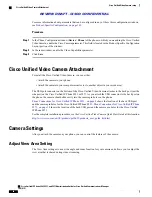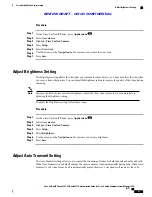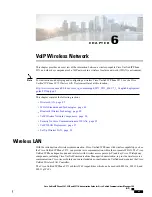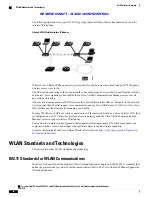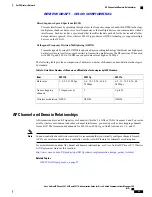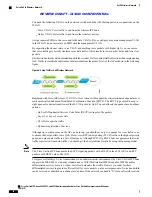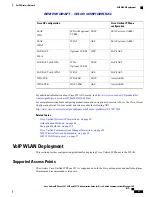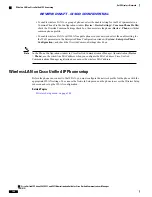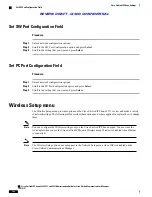
bandwidth, when the amount of voice traffic is increased beyond this limit (to N+1 calls), the quality of all
calls suffers.
To help address the problems of VoIP stability and roaming, an initial Call Admission Control (CAC) scheme
is required. With CAC, QoS is maintained in a network overload scenario by ensuring that the number of
active voice calls does not exceed the configured limits on the AP. The Cisco Unified IP Phone can integrate
layer 2 TSpec admission control with layer 3 Cisco Unified Communications Manager admission control
(RSVP). During times of network congestion, calling or called parties receive a fast busy indication. The
system maintains a small bandwidth reserve so wireless phone clients can roam into a neighboring AP, even
when the AP is at full capacity. After reaching the voice bandwidth limit, the next call is load-balanced to a
neighboring AP without affecting the quality of the existing calls on the channel.
Implementing QoS in the connected Ethernet switch is highly desirable to maintain good voice quality. The
COS and DSCP values that the Cisco Unified IP Phone sets do not need to be modified.
The Cisco Unified IP Phone 9971 does not support Video CAC; however, Voice CAC is supported for
WLANs.
Note
Related Topics
Authentication Methods, on page 94
Cisco Unified Communications Manager Interaction, on page 93
VoIP WLAN Deployment, on page 97
Cisco Unified Communications Manager Interaction
Cisco Unified Communications Manager is the call control component in the network that handles and routes
calls for the wireless IP phones. Cisco Unified Communications Manager manages the components of the IP
telephony system (the phones, access gateways, and the resources) for such features as call conferencing and
route planning. When you deploy a Cisco Unified IP Phone on a wireless LAN, you must use Cisco Unified
Communications Manager Release 7.1(3) or later and the SIP protocol.
Before Cisco Unified Communications Manager can recognize a phone, the phone must register with Cisco
Unified Communications Manager and be configured in the database.
You can find more information about configuring Cisco Unified Communications Manager to work with the
IP phones and IP devices in the
Cisco Unified Communications Manager Administration Guide
and
Cisco
Unified Communications Manager System Guide
.
Related Topics
Cisco Unified IP Phone Setup in Cisco Unified Communications Manager, on page 35
Security for Voice Communications in WLANs
Because all WLAN devices that are within range can receive all other WLAN traffic, securing voice
communications is critical in WLANs. To ensure that intruders do not manipulate nor intercept voice traffic,
the Cisco SAFE Security architecture supports the Cisco Unified IP Phone and Cisco Aironet APs. For more
information about security in networks, see
http://www.cisco.com/en/US/netsol/ns744/networking_solutions_
Cisco Unified IP Phone 8961, 9951, and 9971 Administration Guide for Cisco Unified Communications Manager 10.0
(SIP)
93
VoIP Wireless Network
Cisco Unified Communications Manager Interaction
REVIEW DRAFT - CISCO CONFIDENTIAL


